If you are experiencing domestic violence and are seeking support in San Diego County, learn more about our domestic violence programs here. We work to connect you with vital resources and empower you to renew your life.
Abuse is an alarming global issue that stretches across all social, economic, and cultural boundaries. In the US, it affects more than 10 million men and women a year. Here in California, the National Coalition Against Domestic Violence reports that “34.9 % of California women and 31.1% of California men experience intimate partner physical violence, intimate partner sexual violence, and/or intimate partner stalking in their lifetimes.”
The insidious nature of abuse often results in a vicious cycle that can be difficult to escape from. However, understanding and recognizing the stages of the cycle of abuse can empower victims to break free and foster healthier relationships—and help allies provide more effective and informed support. Here’s a more in-depth look at the cycle of abuse and how to break it.
What Is the Cycle of Abuse?
The cycle of abuse is a social cycle theory developed by Lenore E. Walker in 1979, designed to illustrate the recurring patterns of behavior in an abusive relationship. This cycle typically involves four stages: the honeymoon phase, tension building, the explosion phase, and reconciliation.
-
Honeymoon Phase: This stage can be characterized by love, intimacy, and charm. The abuser often seems “perfect,” leading the victim to feel loved and cherished. However, this phase lays the groundwork for the manipulation and control that follows.
-
Tension-Building Phase: Over time, minor disputes and disagreements escalate, causing a noticeable shift in the relationship. The victim may feel like they are walking on eggshells, anxious about triggering the abuser.
-
Explosion Phase: This stage is where the abuse comes to a head. It could be physical, emotional, sexual, or financial, and leaves the victim feeling powerless and frightened.
-
Reconciliation Phase: Following the incident of abuse, the abuser often expresses remorse and promises to change, temporarily returning the relationship to the honeymoon phase. This return to “normalcy” can confuse the victim and make them hopeful that the abuser has truly changed.
Understanding and recognizing these stages is the first step toward breaking the cycle of abuse. Remember that abuse can often manifest as control and manipulation, rather than overt acts of violence. Therefore, it’s crucial to recognize the signs of an abusive relationship. These can include excessive jealousy, isolation from friends and family, intimidation or threats, and blame-shifting for abusive behavior.
If you find yourself constantly second-guessing your actions due to fear of your partner’s reaction, feeling isolated and controlled, or rationalizing your partner’s abusive actions, it’s essential to recognize that you may be in an abusive relationship.
Breaking the Cycle of Abuse
Overcoming abuse is never easy, but with the right tools and resources, it is possible. Here are some actionable steps to help you or someone you care about break free from an abusive relationship cycle:
-
Acknowledge the abuse: The first step to breaking the cycle is acknowledging that the abuse is happening. This can be difficult, as denial is a common coping mechanism. Reach out to a trusted friend, family member, or counselor for support.
-
Educate yourself: Knowledge is power. Learn more about the nature of abuse, its impact, and strategies for recovery.
-
Establish a support system: Emotional support is essential. Find friends, family members, or support groups that can provide a safe space to share your experiences.
-
Develop a safety plan: If you’re in immediate danger, develop a safety plan. This could include safe places to go, emergency contacts, and an escape plan. Here at Crisis House, we offer domestic violence programs in the Santee, California area, including financial assistance, emergency shelter, and rapid re-housing initiatives.
-
Seek professional help: Therapists and counselors specialized in domestic violence can offer valuable support and advice. They can provide resources for leaving an abusive relationship and help you develop healthy coping strategies as you heal from trauma.
Remember, you are not alone. Countless individuals have managed to break free from the cycle of abuse, and so can you. Always prioritize your safety, trust your instincts, and reach out for help when you need it. This journey may seem daunting, but taking that first step is the beginning of a path toward healing and recovery.
Don’t let fear keep you trapped in the cycle; use the knowledge, resources, and support available to you to make a change. Start today, and pave your way to a safe, healthy, and happy life.
At Crisis House, we are here during these stressful times to support families with our services and resources. We provide crisis intervention, transitional and permanent housing, and services for families and children fleeing domestic violence. We’re leaders in critical services in San Diego County, administering programs for individuals and families experiencing domestic violence and homelessness.
See our impact and help us reach those in need by donating or volunteering today! You can also sign up for our newsletter to stay in the loop as we work to connect families, children, and individuals to crucial resources. Together, we can stop the cycle of domestic violence, child abuse, and homelessness and empower people to renew their lives!







